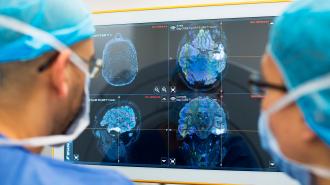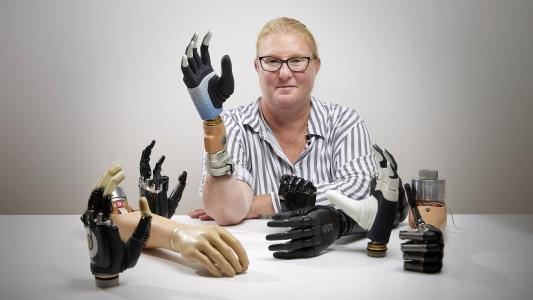A new AI can identify the type of brain tumor while surgeons are in the process of removing it — a breakthrough that could lead to safer treatment and a reduced risk of recurrence.
The challenge: Treatment for brain cancer typically starts with surgery to remove as much of the tumor as possible. Sometimes, surgeons are able to extract the entire thing, but if cutting out all of a brain tumor could cause significant side effects, they may have to leave some of it behind.
“The surgeon can adapt the surgical strategy … depending on the tumor subtype.”
Jeroen de Ridder
They won’t know for sure whether this was the right decision for another week or two. That’s about how long it’ll take a pathologist to analyze DNA in the removed tumor and determine which of the more than 80 tumor subtypes the patient has.
If it’s a particularly aggressive type of cancer that’s likely to recur, removing the rest of the brain tumor as soon as possible could be worth the risk, but it means putting the patient through a second brain surgery.
What’s new? Dutch researchers have now developed an algorithm, called Sturgeon, that can identify a tumor subtype within 90 minutes. That means surgeons can remove a part of a tumor, have it analyzed, and know the subtype while the patient is still on the operating table.
“The surgeon can adapt the surgical strategy, either go very aggressive or be more conservative, depending on the tumor subtype,” said research group leader Jeroen de Ridder from UMC Utrecht.
How it works: Sturgeon relies on a new technique called “nanopore sequencing,” which can write out the sequence of bases (A, G, T, and C) in a DNA sample in real time.
It does this by splitting DNA into its two strands and threading one strand through a tiny pore. An electric current is passed through the pore, and as the DNA moves through it, each base disrupts the current in a specific way that can be used to determine the sequence.
It wouldn’t be possible to sequence all of the DNA in a brain tumor sample in the short timeframe the researchers were targeting, so they set out to create an algorithm that could predict tumor subtypes based on the short amount of sequencing they are able to do.
The AI correctly identified the brain tumor subtype in 18 out of 25 surgeries.
To train it, they used brain tumor tissue samples stored in a biobank at the Princess Máxima Center, a pediatric oncology center in the Netherlands.
During testing, the algorithm correctly identified the tumor subtype for 45 out of 50 samples (it wasn’t confident enough to make a diagnosis for the other 5). These diagnoses were delivered within 40 minutes of researchers starting the sequencing process.
When used during actual surgeries (20 on children and 5 on adults), Sturgeon correctly identified the brain tumor subtype 18 out of 25 times. The other 7 times, it wasn’t able to confidently predict a subtype.
Looking ahead: The researchers now aim to validate their technology with more brain cancer patients while also improving the AI with more training. They also want to compare the outcomes of patients treated with this approach versus the standard method.
“It is truly exciting that we have been able to actually make the step into clinical practice by combining all areas of expertise, from basic researchers to pathologists and surgeons,” said de Ridder. “By doing so, we can help surgeons to optimize the outcome of brain tumor surgery.”
We’d love to hear from you! If you have a comment about this article or if you have a tip for a future Freethink story, please email us at [email protected].





